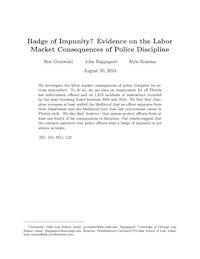By the United States Department of Justice. Civil Rights Division and United States Attorney’s Office For the Southern District of Mississippi
Hours after the Department of Justice announced its investigation of the Lexington Police Department (LPD) on November 8, 2023, officers chased a Black man through a field and tased him nine times. The man began foaming at the mouth. One officer pointed to a Taser probe lodged in the man’s hat and said, “Damn, one of my probes hit him in the head.” The man, who has a behavioral health disability, had been accused of disturbing a business. This was not the man’s first encounter with LPD. Earlier that year, LPD officers had jailed him for ten days for trespassing; four days for stealing a cup of coffee; and twelve days for stealing packets of sugar. Each time they arrested him, LPD unlawfully refused to release the man until he paid money towards old fines and fees he owed from misdemeanors and traffic tickets. But each arrest added more fines and fees to the ledger. By November 2023, the man— who has no job, no assets, and no bank account—owed more than $7,500. In encounter after encounter with the man, LPD violated his rights. But like countless people in Lexington, the man had little recourse. Through a combination of poor leadership, retaliation, and a complete lack of internal accountability, LPD has created a system where officers can relentlessly violate the law. FINDINGS The Department of Justice has reasonable cause to believe that the City of Lexington and the Lexington Police Department engage in a pattern or practice of conduct that deprives people of their rights under the Constitution and federal law. Specifically, we find that LPD unlawfully: • Arrests, jails, and detains people who cannot pay fines or fees, without assessing their ability to pay; • Uses excessive force; • Conducts stops, searches, and arrests without probable cause, including jailing people on illegal “investigative holds” and arresting people solely because they owe outstanding fines; • Imposes money bail without justification or assessment of ability to pay; • Jails people without prompt access to court; • Violates the rights of people engaged in free speech and expression, including by retaliating against people who criticize the police; • Discriminates against Black people; and • Operates under an unconstitutional conflict of interest because LPD’s funding depends on the money it raises through its enforcement..
Washington, DC: United States Department of Justice. Civil Rights Division, 2024. 47p.





